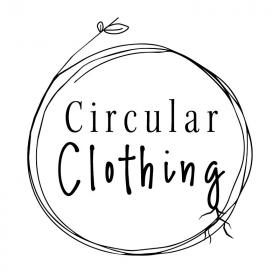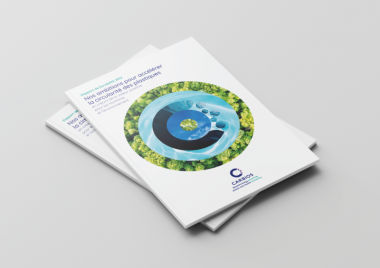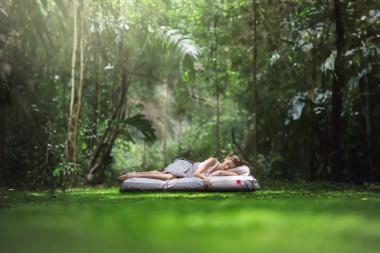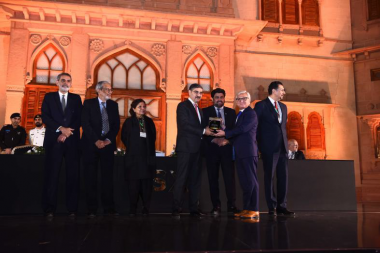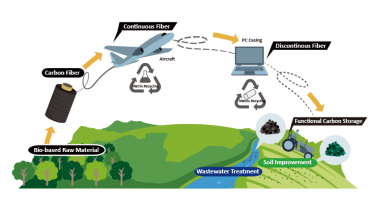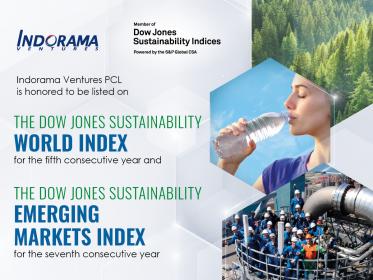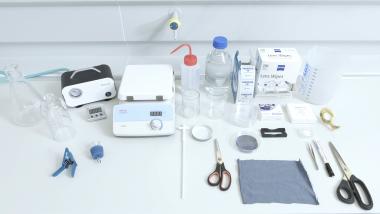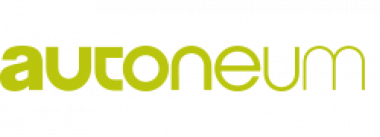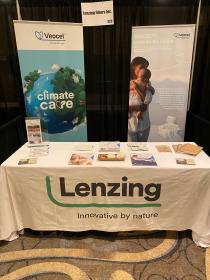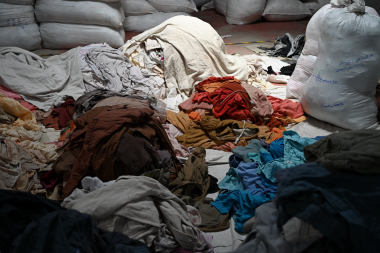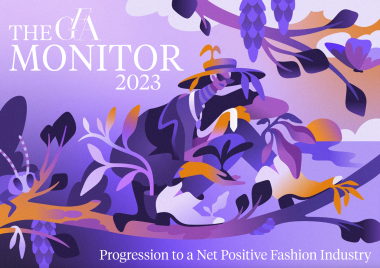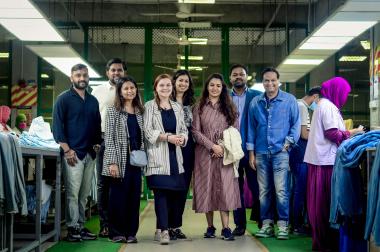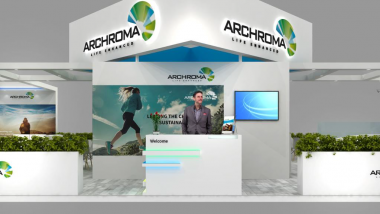Circular Clothing: 30 neue Cradle to Cradle Certified® Produkte
Ein Jahr nach der Einführung der ersten Cradle to Cradle Certified® Kollektion werden über 30 neue zertifizierte Produkte der Circular Clothing Genossenschaftsmitglieder lavie, STUNED und the Blue suit auf den Markt gebracht.
Dank intensiver Forschung der letzten drei Jahre präsentiert die Circular Clothing Genossenschaft über 30 Cradle to Cradle Certified® Produkte in den Bereichen Mode, Accessoires und Heimtextilien. Um zertifiziert zu werden, wurden die verwendeten Materialien und Herstellungsprozesse in den folgenden Wirkungskategorien geprüft: Materialgesundheit, Produkt-Kreislauffähigkeit, saubere Luft und Klimaschutz, soziale Fairness sowie Wasser- und Bodenschutz. Je nachdem, wie weit all diese Kriterien bei der Herstellung erfüllt werden, gibt es verschiedene Zertifizierungsstufen von Bronze über Silber, bis zu Gold und Platin.
Zirkuläre Produktlösungen sind dank der engen Kollaboration und der Unterstützung von engagierten Partnern wie dem Migros-Pionierfonds, epeaswitzerland und der STF Schweizerische Textilfachschule möglich.
Blue suit
Wie muss ein Kleidungsstück designt sein, damit es kreislauffähig ist? Dies ist die zentrale Frage, die the Blue suit antreibt. Eine Antwort hierzu gibt der Cradle to Cradle®-Designansatz, der mit der Black Denim-Kollektion im Jahr 2022 umgesetzt wurde.
Der Cradle to Cradle® Designansatz beginnt bei der Materialwahl: verwendet werden nur Materialien ohne Giftstoffe, die gesund für Mensch und Umwelt sind. Ebenso wichtig ist, wie die Materialien verarbeitet, welche Farbstoffe eingesetzt werden und wie die Waschungen und Drucke erfolgen. Auch diese Produktionsschritte müssen Cradle to Cradle®-konform sein.
Die Black Denim-Kollektion wurde diesen Herbst um weitere Styles wie die Hosen ANN und SIMONE sowie den Blazern MARLENE und YOSANO ergänzt. Alle Produkte haben Cradle to Cradle Certified® Bronze erreicht. Ein Material-Highlight ist die Einführung der ersten Cradle to Cradle Certified® Bronze Business-Hose MILLER aus Wolle. Aus Qualitätsgründen wird ein nicht-zertifiziertes Nähgarn verwendet. Alle anderen Materialien der Kleidungsstücke sind Cradle to Cradle Certified® Gold.
lavie
«Made to last» heisst die neuste Capsule Collection von lavie, die Cradle to Cradle Certified® Gold ausgezeichnet ist. Sie umfasst insgesamt 19 Varianten von Zierkissen und Kochschürzen, die allesamt aus Denim in Italien gewoben, genäht und teilweise mit Laser bearbeitet werden. Der Titel «Made to last» steht zugleich für die Designmaxime, welche dem gesamten Sortiment des Heimtextilherstellers aus Langenthal zugrunde liegt.
«Made to last» zeigt auf, wie Design in einem Spannungsfeld entsteht: Zwischen der Lust an Gestaltung, den technischen Machbarkeiten und dem Anspruch an Funktionalität. Basis der Kollektion war der zertifizierte Denim in den Farben Black, Ecru und Grey. Die Kollektion setzt sich aus unifarbenen Produkten sowie besonderen Highlights zusammen: Die Kissenbezüge «Marilyn» und «Geena» etwa wurden mit Lasertechnologie bearbeitet. Je nach Einstellung des Lasers wird die Oberfläche des Denims entweder graviert oder das Textil wird ganz durchtrennt.
STUNED
Die Mission des Start-ups STUNED war immer, hochwertige Taschen zu kreieren, die im Einklang mit der Natur stehen. Bisher stand der Designprozess im Vordergrund und die Wahl der Komponenten war eine vergleichsweise einfache Aufgabe. Auf diese Weise kommen für ein Produkt schnell zwischen 10 bis 20 verschiedene Komponenten zusammen. Die Gründerinnen mussten aufgrund der begrenzten Verfügbarkeit von Cradle to Cradle Certified®-Materialien und der geforderten Mindestbestellmengen umdenken.
Was ist alles möglich mit einer minimalen Anzahl an Komponenten? Entstanden ist ein erweitertes Produktsortiment. Zusammen mit dem klaren Bekenntnis zur Nachhaltigkeit wird weiterhin an der Schweizer Fertigung festgehalten und neue Taschen und Kleider, die alle aus den gleichen vier Cradle to Cradle Certified® Gold Komponenten hergestellt sind. Sie liefern den Beweis, dass trotz minimalistischem Design auf nichts verzichtet werden muss.
Circular Clothing


